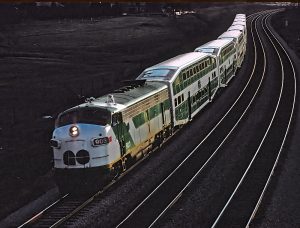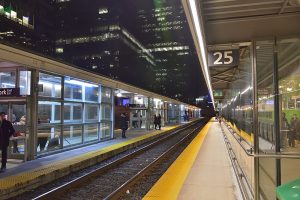Staying Safe on the Rails
For Chris Fox, getting sleepy on the job is a serious concern. Working at the railways – especially driving a train – requires strict attention. No one wants a train engineer to be tired. Chris works for Bombardier, and the company recognizes the importance of rest. If a worker is unable to get adequate rest before a shift, they can call in and will not have to work that day. It means fully rested drivers and that means safer trains for everyone.

Chris Fox working with two members of the Toronto Railway Museum team in 2020.
Driving Safely. Enjoy this audio clip with an English transcription.
This policy is important because engineers have many things to monitor, especially on passenger trains. GO Transit services a busy area of Ontario. There are passenger and freight trains travelling on the same tracks, as well as track switches and road crossings to watch.
Stay Alert To Stay Safe
GO Trains also have to travel through busy stations, right next to platforms filled with waiting passengers. Sometimes, trains aren’t scheduled to stop at these platforms and run through at high speed. Chris runs an express train that passes through Long Branch station, in West Toronto, without stopping. Think of the last time you were at a train station, or saw a picture of one. You may have noticed a sign warning of high-speed trains passing through the station. It is true – these trains can travel at 90 miles per hour through a station.
When you were at that train station, you may also have noticed a yellow line along the platform. This line is used to mark where you can safely wait for your train. Crossing the yellow line is dangerous. It may seem far away from the tracks, but trains are wider than the track and can move side to side at high speeds. Chris remembers once seeing a man standing on the platform on the wrong side of the yellow line, reading his newspaper. Chris blew the whistle, but the man did not move. As Chris went through the station, the wind created by the train pulled the newspaper out of the man’s hands. He was lucky to only lose his newspaper. The next day, Chris noticed the same man was on the platform – but he was standing behind the yellow line.



